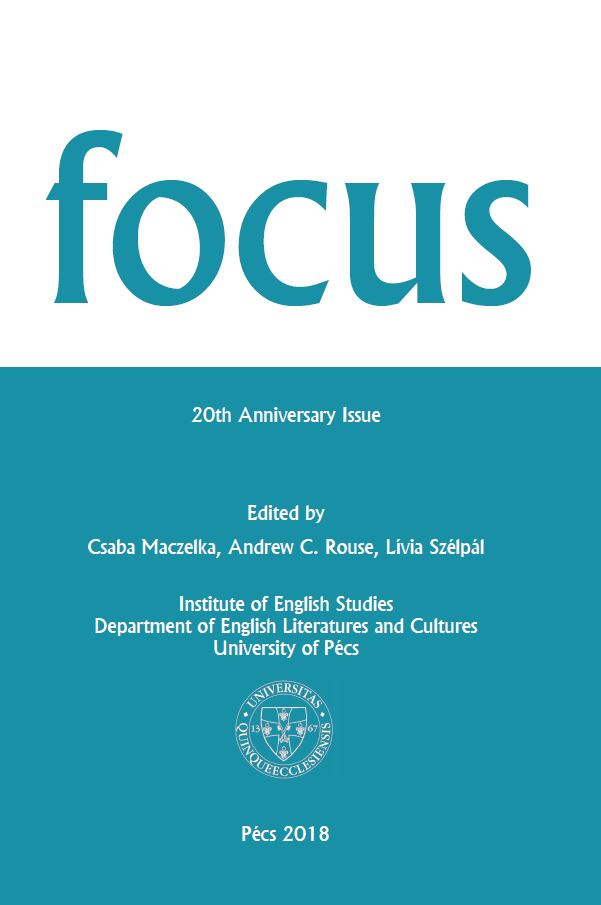Crisis and Literature: Future Imperfect, or the Case of Don DeLillo’s Cosmopolis
DOI:
https://doi.org/10.15170/Focus.11.2018.5.73-80Abstract
In his afterword to The Cambridge Companion to Don DeLillo (2008), Joseph M. Comte makes a strong case for positioning the author as a writer of historical liminality, and citing DeLillo himself, he claims that Cosmopolis is a text “poised liminally ‘between the end of the Cold War and the beginning of the Age of Terror’” (183). Not yet aware of the shift taking place in the author’s interest from all matters historical to his previous preoccupation with corporeality and writing, Comte goes on to argue that DeLillo’s novel of 2003 stages how “[c]yber-capital and terrorism contend within the singularity of global power” (185), inasmuch as the text is preoccupied with what commentators usually identify as “the technological sublime” (186) in DeLillo’s oeuvre, in this case representing the “interaction between technology and capital, the inseparability” of the two (23). Comte and other scholarly commentators praise Cosmopolis exactly for what it was criticized for at the time of its publication, its witty handling of academically embedded ideas, thereby somewhat downplaying how the text, as I will argue, discusses, or indeed embodies, some of these ideas in relation to the white male body and terrorism in a curious temporal structure: written after 9/11, but presenting what one may call reverse déjà vu of the terror attacks. Comte’s estimation is, therefore, in line with the contemporary reviews of the book at the time of its publication, and stresses the intellectual achievement and poetic qualities of the text.
Downloads
Published
How to Cite
Issue
Section
License
Copyright (c) 2022 FOCUS: Papers in English Literary and Cultural Studies

This work is licensed under a Creative Commons Attribution-NonCommercial-NoDerivatives 4.0 International License.
FOCUS: Papers in English Literary and Cultural Studies follows the principles laid down by Creative Commons, which provides guarantees for the Author’s copyright while also ensuring that intellectual properties are made available for the wider public in a digital form. All papers submitted to the journal apply the following licence conditions (indicated on the journal’s website as well as in individual publications):
“© This work is licensed under a Creative Commons Attribution-NonCommercial-NoDerivatives 4.0 International License.”
You are free to:
- Share, copy and redistribute the material included in the journal in any medium or format under the following terms:
- Attribution — You must give appropriate credit to the Author, and indicate the original place of publication [FOCUS: Papers in English Literary and Cultural Studies, Issue nr., page numbers.].
- NonCommercial — You may not use the material for commercial purposes.
- NoDerivatives — You are not allowed to remix, transform, or build upon the material.
- The above conditions must always be indicated if the journal material is distributed in any form.
- The above conditions must always be met, unless a written permission signed by the Author and the Editor-in-Chief states otherwise.

